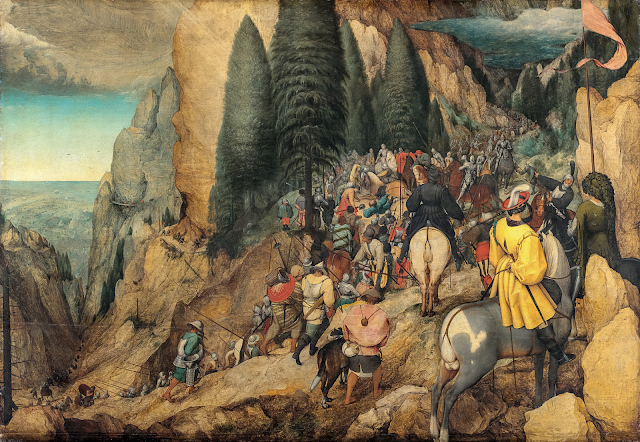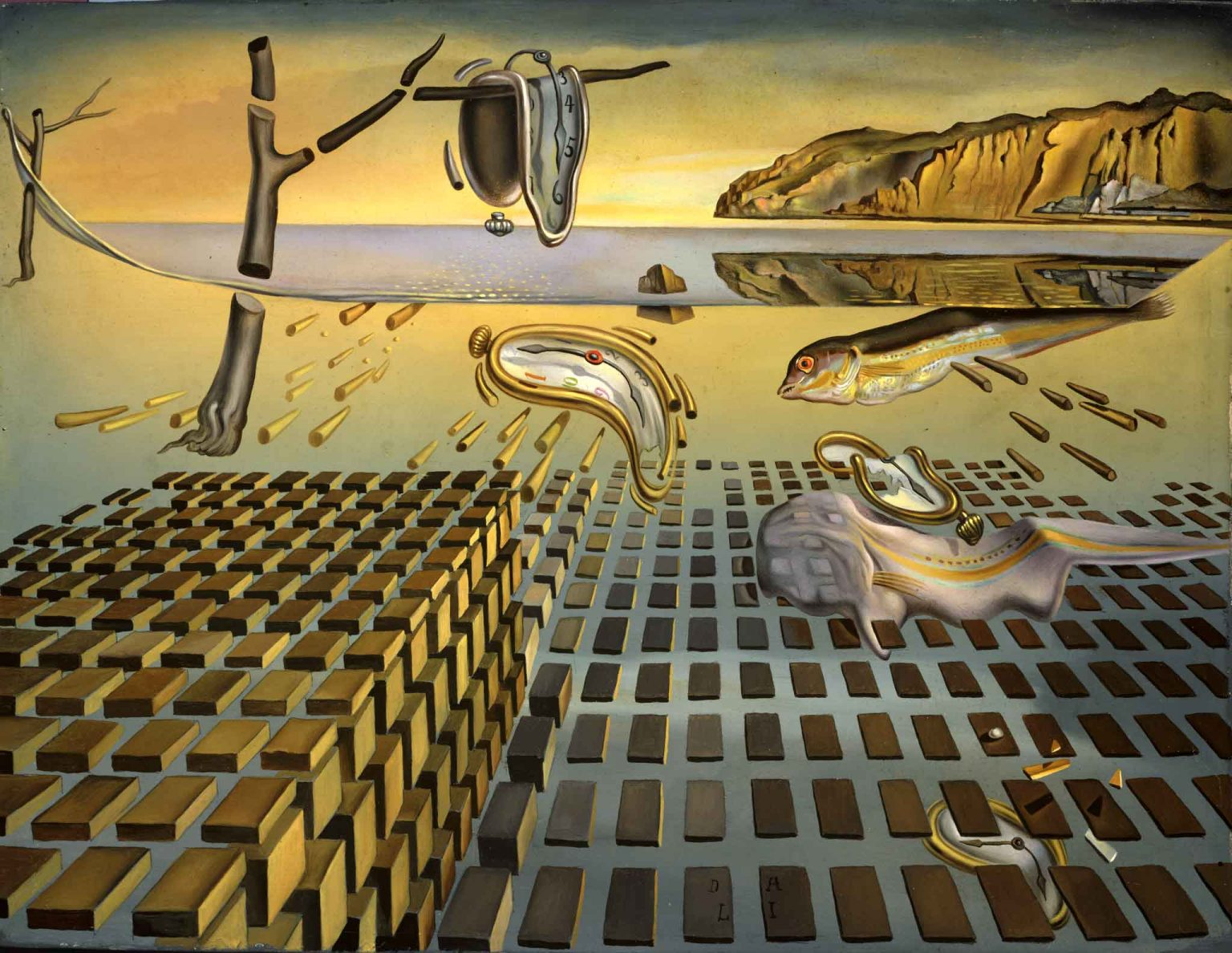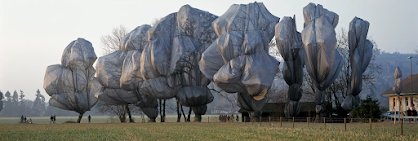Art of the Great Depression
During the tragedy and bloodshed of World War One, art shifted from works that elicit positive emotions such as peace and joy to art that more accurately portrayed the feelings of the time. This trend continued into the Great Depression. Artists who were struggling to get by were funded by the Works Progress Administration to create art. Art often portrayed what people wanted the world to be like rather than the poverty and sorrow surrounding them. This era also brought forth abstract art that focused on the emotions behind the art rather than the actual content of the paintings. Themes of Great Depression art include loneliness and isolation.
Fall Plowing by Grant Wood (1931)
This painting was created in the artist's hometown of Viola, Iowa. It is a style of Great Depression era art known as Regionalism. This style focused on Midwest agriculture. Regionalist artists saw the industrialization of America and desired a return to America's agricultural roots. They saw a return to these roots as the cure to the Depression.
Art Elements:
The shapes of the trees, hills, and fields stand out to me in this painting. The undulating shapes are natural enough to create an accurate depiction of the environment, but still have a slightly unnatural feel to them. The shapes of the hills look like waves on the sea. This gives the paining an unbalanced feel. The plow resting on a level foreground helps to balance this out. The plow seems to symbolize strength and stability in an ever-shifting world.
Lines also draw attention in this painting. The lines separating the fields help to break up the painting and make it feel less monotonous. Some of the fields also have lines. The hay in the field in the center of the painting is also arranged in evenly spaced rows. These lines catch the attention and draw the eye to the back of the painting.
Colors are another way the artist catches the eye. The painting has a lot of yellow, which naturally draws attention. Most colors couldn't overpower the intensity of the yellow, but the white field in the center is bright enough to draw the eye to it rather than the yellow. The colors are earthy and natural, which contrast from the paintings of city life that were common at this time.
I can see this painting hanging somewhere where the surroundings match the painting, like a farm house in the Midwest. I wouldn't mind owning a copy of this painting. It has a quiet, isolated feel to it, and the plow creates a feeling of strength and stability.
Gas by Edward Hopper (1940)
Edward Hopper spent most of his life in New York City, where this painting is currently housed. It is likely that it was painted there. Hopper's art is known as Realism. He painted accurate depictions of life during the Great Depression. Gas, like most of Hopper's other paintings, portrays a lonely and quiet scene.
Art Elements:
The artist masterfully used warm colors to create a welcoming feeling. The bright red gas pumps and the bright lights on top of them draw the eye and act like a comforting beacon surrounded by an empty and lonely background.
Tone creates drama and forms shadows that add suspense to the painting. The road goes from brightly-lit to dim and shadowed as it becomes shaded by trees. The darkness makes it seem like the road comes to an eerie end. The shadows made by the gas pumps make it look like the sun is about to go down. This creates suspense and anticipation for night.
Texture helps separate the background from the foreground. The trees, grass, sky, and road are all blurred and soft, while the building, gas pumps, and shadows use clean, sharp lines. This makes the gas station seem like the focus of the painting while everything else is fading into the background.
I wouldn't want to own a copy of this painting. It creates feelings of isolation that elicit fear and suspense. I think this painting would be very eerie to see if I were by myself somewhere quiet.
Metamorphosis of Narcissus by Salvador Dali (1937)
This painting currently hangs in London, but the artist spent time in France, Spain, and America, so it is difficult to say where this paining was created. Unlike the Realist work of Hopper, Dali's works delve into the fantastical realm of Surrealism. Surrealism was a result of the tragedy and sorrow of World War One and the Great Depression. People were discontent with reality, so artists used Surrealism as an escape from the harsh environment they lived in.
Art Elements:
This painting uses pattern in the form of repetition to create a second figure. The person on the left is a living human, and the one on the right is the same person, but has turned to stone. This repetition is representative of change over time and the disintegration of what once was. The large rock in the background on the left side of the painting is reflected in the water. It divides the painting in half and makes it seem like there are two separate paintings here.
Expert use of form creates a visual illusion in this painting. The stone figure on the right appears to be a copy of the human on the left, however, upon closer inspection, it can also be viewed as a hand holding an egg.
Tone creates dramatic contrasts in the painting. The skin of the person is bright and appears illuminated by the sun, while the stone is dark and surrounded by shadow. Additionally, the water on the left side of the painting helps to reflect and increase the light, while the right side of the painting is full of clouds and a dark foreground. This helps intensify the contrast between the two halves of the painting.
I appreciate the creativity of this art, but I wouldn't want to own a copy of it. Its very weird, and there is a lot going on in the background. It feels very crowded and noisy when you look at the background, but focusing only on the person and his stone double makes this person feel very isolated and somber.
Works Cited:
“12 of the Best and Famous Paintings of Edward Hopper.” Artisticjunkie, 27 Feb. 2019, artisticjunkie.com/edward-hopper-paintings/.
Art Institute of Chicago. “America after the Fall: Paintings from the 1930s.” Www.youtube.com, 2017, www.youtube.com/watch?v=CrE5K5sS-Vo&embeds_referring_euri=https%3A%2F%2Fart200.community.uaf.edu%2F&source_ve_path=MjM4NTE&feature=emb_title.
“Eyeconart:Modern Surrealism.” Robinurton.com, robinurton.com/history/surrealism.htm.
“Fall Plowing.” Picturing the Americas, 15 July 2015, picturingtheamericas.org/painting/fall-plowing/.
Gurney, Tom. “Gas by Edward Hopper.” Www.thehistoryofart.org, 19 June 2020, www.thehistoryofart.org/edward-hopper/gas/.
Vance, Heidi. “Edward Hopper: Get to Know the King of American Realism in 15 Facts.” TheCollector, 13 Sept. 2020, www.thecollector.com/edward-hopper-artist-painter/.






Hello Honor! Thank you for sharing Fall Plowing. You mention that the shapes have an unnatural feel to them; I really enjoy how those shapes make the painting feel slightly cartoonish. I think the use of color that you mentioned also gives it a cartoon feel. The scene is very calming to me, and I can see why Regionalist artists wanted to create art like this during such a tough time.
ReplyDeleteI was surprised that you find Gas to be fear-inducing and suspenseful. I find that the warm colors and style similar to Fall Plowing make it feel comforting. I can imagine a nearby American Diner selling hot coffee and apple pie.